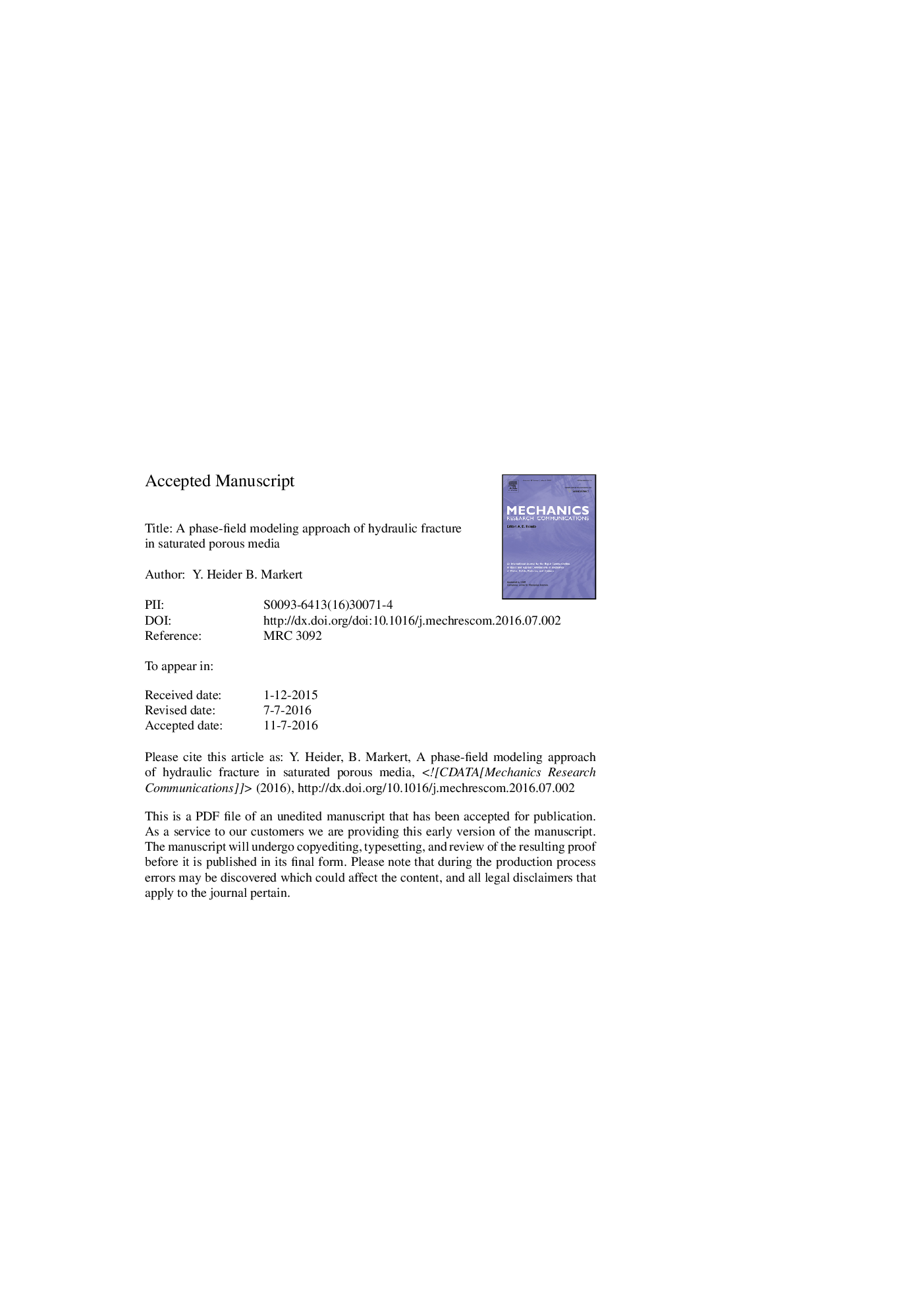| Article ID | Journal | Published Year | Pages | File Type |
|---|---|---|---|---|
| 5018664 | Mechanics Research Communications | 2017 | 12 Pages |
Abstract
Continuum porous media theories, extended by a diffusive phase-field modeling (PFM) approach, introduce a convenient and efficient tool to the simulation of hydraulic fracture in fluid-saturated heterogeneous materials. In this, hydraulic- or tension-induced fracture occurs in the solid phase. This leads to permanent local changes in the permeability, the volume fractions of the constituents as well as the interstitial-fluid flow. In this work, the mechanical behaviors of the multi-field, multi-phase problem of saturated porous media, such as the pore-fluid flow and the solid-skeleton deformation, are described using the macroscopic Theory of Porous Media (TPM). To account for crack nucleation and propagation in the sense of brittle fracture, the energy-minimization-based PFM procedure is applied, which approximates the sharp edges of the crack by a diffusive transition zone using an auxiliary phase-field variable. Furthermore, the PFM can be implemented in usual continuum finite element packages, allowing for a robust solution of initial-boundary-value problems (IBVP). For the purpose of validation and comparison, simulations of a two-dimensional IBVP of hydraulic fracture are introduced at the end of this research paper.
Related Topics
Physical Sciences and Engineering
Engineering
Mechanical Engineering
Authors
Y. Heider, B. Markert,
